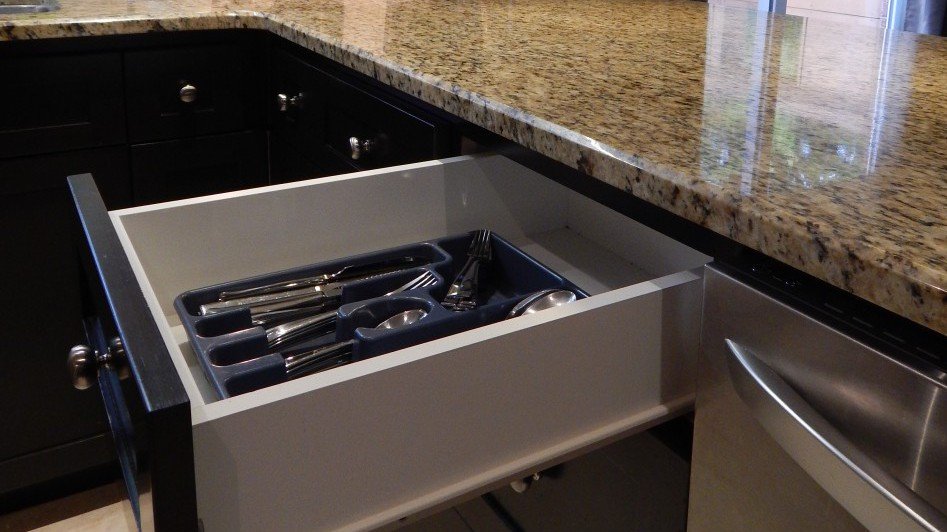Workplace layout is of major focus across a multitude of organizations lately. Recent studies report the importance of layout and office design to improve productivity, spark inspiration, and reduce fatigue. For example, a recent article in Harvard Business Review explains that major corporations across the U.S., such as Google, Yahoo, and Samsung, are actively trying new layout designs to promote employee mingling and “chance encounters”. Another example comes from a Forbes article describing the impacts of a Steelcase CEO’s decision to move all executives off the same floor, in an effort to create a “we” space. Likewise, the layout of these office spaces is also physically and ergonomically important. Studies report that even details such as standing at your desk or in meetings, instead of sitting, is better for both your physical health and your job performance.
This whole concept of layout design and its impact on performance sparked a similarity in my mind with my recent move from an apartment to a house. Given that we were moving from roughly a 700-sq ft apartment to a 1650 sq-ft two-story house, it wasn’t exactly like we had a ton of stuff. We had the major items: couch, kitchen table and chairs, bed, TV, etc. It didn’t take me long to decide where these things would go, given that they belonged in obvious spaces. The couch goes in the living room along with the TV. The bed goes in the bedroom. And so on.
The placement of kitchen items, however, was less obvious. And the average kitchen, I realized, contains a ridiculous amount of stuff. There was a reason I hadn’t unpacked many of our wedding-registry kitchen items we received while we lived in the apartment – there was no room. Now, with a house, I had to make room. Not only that, I wanted to ensure that where I put these items made the most sense in terms of usability. And, once they were moved, I wanted them to stay in their place. I refused to move things to a place “just for now” and have to revisit the issue later. I’m all about efficiency.
I like to cook. Some people hate cooking and, in that case, it perhaps makes sense that kitchen layout would be less important. But, to me, it was crucial. After some careful thought, I came up with the following points:
- Plates are heavy, awkward, and high-use, and should go in an upper cabinet, where you can easily reach them.
- Cups and mugs are high-use and take up, surprisingly, a lot of space. If possible, be sure to dedicate a full upper-level cabinet to them. (Oh, and wine glasses! Unless you have a separate hutch for those. I, sadly, do not.)
- Spices and related cooking/baking items (such as sugar and flour) should be near the stovetop.
- Make use of the drawer that often comes beneath your oven; I store baking sheets and loaf pans in there.
- Large, unusually-shaped items that you only use once or twice a week, such as a crockpot or blender, go in lower-level cabinets. I find these nicely fit in corner cabinets, which pack a ton of space but are too awkward for high-use items.
- Utensils belong in drawers near food preparation areas, preferably also close to the dishwasher (if applicable). I have a large peninsula where we load up our plates for dinner, and it’s easiest to grab the forks and knives from the drawer just below. As for the dishwasher element, it just makes unloading utensils that much less of a pain.
- Below the sink is for non-food type stuff, such as dishwashing liquid, general cleaners, and garbage bags. There are, conveniently, two small drawers near my sink as well that I use for sponges and dish cloths.
- Items such as vases or seasonal serving dishes that you use only a few times a year can be stored in the cabinet above the fridge. Storing high-use items here is way too inconvenient.
These tips are by no means scientifically validated and, I have to admit, I didn’t even consult a professional guide. However, I will say that I have been in many kitchens in my day and have definitely noted the things that work and the things that don’t (call these “usability trials”, if you will). I’ve also noticed trends of what others do in their kitchens, and a lot of it just makes sense. Why wouldn’t you have the spice rack right near the stove? Why wouldn’t you store the Keurig right below the mug cabinet? After over six months in our new house, I haven’t had a single issue with my chosen layout. In fact, my husband, much to his chagrin, often hears me proclaim, “Isn’t the usability of this kitchen awesome!?” or something equally annoying. But the fact is, our kitchen is incredibly user-friendly because I put the time and effort into optimal organization. My hope with this blog is to help others reduce time and effort in their next move or kitchen reorganization, and to provide a close-to-home example that a thoroughly planned layout really does affect performance.
Samantha Davis





